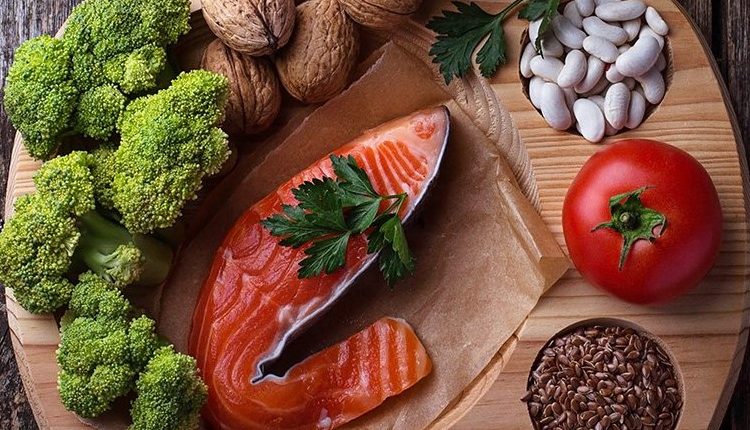
Cholesterol, an old friend that is good to keep at bay
Cholesterol is a fat present in the human body: there are two types, the ‘bad’ LDL and the ‘good’ HDL. Why is it important to keep its values under control? Can you take action to keep it at bay?
Cholesterol is a fat present in the blood and tissues, produced by the body and to a lesser extent introduced through food.
When it is present in excessive amounts (high cholesterol or hypercholesterolaemia) it can become a risk factor for cardiovascular diseases (such as heart attack or stroke) because it can cause the creation of atherosclerotic plaques that restrict or block blood circulation in the blood vessels.
CHOLESTEROL, NORMAL BLOOD VALUES
Blood tests can be used to assess both total cholesterol levels, consisting of the LDL and HDL fraction, as well as the individual LDL and HDL component.
The normal value for total cholesterol is less than 200 mg/dL.
The normal value for LDL-cholesterol is less than 100 mg/dL.
The optimal HDL cholesterol value is above 60 mg/dL.
LDL AND HDL CHOLESTEROL
In order to be transported in the bloodstream, cholesterol needs a protein component that forms lipoproteins.
There are different types of lipoproteins and thus of cholesterol, distinguished according to the amount of cholesterol transported:
LDL-cholesterol, called ‘bad’ or atherogenic cholesterol, is transported to peripheral tissues and when in excess can give rise to atherosclerotic plaques.
HDL cholesterol, also called ‘good cholesterol’, is transported from peripheral tissues to the liver where it is either degraded or used for the synthesis of bile salts.
CAUSES OF INCREASED CHOLESTEROL
Poor diet and a sedentary lifestyle are often associated with high cholesterol levels.
We should not forget that hypercholesterolaemia can also be secondary to genetic factors, as in the case of congenital familial hypercholesterolaemia.
Altered cholesterol levels can also be a consequence of certain diseases such as diabetes and hypothyroidism and as a result of taking drugs such as oral corticosteroids, the contraceptive pill and beta-blockers.
HIGH CHOLESTEROL AND CARDIOVASCULAR RISK
Failure to treat high LDL (bad) cholesterol combined with low HDL cholesterol and hypertriglyceridemia can predispose to the formation of atherosclerotic plaques, which obstruct blood flow within the arteries.
This condition is known as atherosclerosis.
Once established, this process is irreversible and can progressively lead to the rupture of the atherosclerotic plaque, the formation of thrombi and the subsequent obstruction of blood flow mainly in the cardiac and cerebral arteries.
Atherosclerosis causes several serious diseases such as stroke, myocardial infarction, and arterial insufficiency of the lower limbs.
Lifestyle modification plays an important role in both the prevention of dyslipidaemia (changes in the amount of fat in the blood) and its treatment
The LARN (Recommended Intake Levels for the Italian Population, produced by the Italian Society of Human Nutrition in 2014) suggest a daily cholesterol intake of 300 mg.
In order not to exceed the recommended amounts of dietary cholesterol, attention must be paid to the consumption of meat, cheese and cold cuts, which represent the most significant source of cholesterol, especially when they are fatty.
MEDITERRANEAN DIET: A VALUABLE AID
Several epidemiological studies have shown that specific dietary patterns are effective in controlling plasma cholesterol concentrations and preventing cardiovascular risk.
The Mediterranean Diet model has been shown to reduce the incidence of cardiovascular events by around 30% and an improvement in total cholesterol levels.
This dietary regime is characterised by the daily consumption of extra virgin olive oil, whole-grain pasta and bread, oily fish and nuts such as walnuts and almonds, with reduced consumption of processed foods and bakery products and mature cheeses rich in fat.
With regard to fat consumption, the guidelines recommend limiting consumption of trans-fatty acids and saturated fatty acids, which have been shown to have a negative effect on circulating LDL-cholesterol values.
In particular, it is recommended to limit consumption of red and processed meat and animal fats and to replace these with vegetable fats rich in polyunsaturated fatty acids.
Omega 3 and 6 fatty acids have also shown a positive effect on increasing HDL cholesterol.
An important role is also played by fibre, especially soluble fibre, which helps control cholesterol by limiting its absorption in the intestine and the reabsorption of bile acids.
The consumption of legumes, vegetables and fruit with skin and cereals such as oats and barley is therefore recommended.
Within a balanced diet, fibre consumption should reach 25-40 g per day, of which 7-15 g of soluble fibre.
THE ROLE OF SUPPLEMENTS
In some cases, in addition to the dietary approach it is possible to include the use of dietary supplements that act on endogenous cholesterol production, in particular the use of monacolin k titrated extracts from fermented red rice is common.
Monacolin k acts similarly to synthetically derived statins by blocking the mechanism of cholesterol production.
It is known from clinical studies that supplementation with phytosterols, such as sitosterol and campesterol, is effective in lowering total and LDL cholesterol levels.
Soy lecithin can also be used to control hypercholesterolaemia.
DRUG THERAPY
When lifestyle changes are not sufficient to reduce total and LDL-cholesterol, drug therapy may be necessary.
Statins are considered the drugs of choice for lowering cholesterol and reducing cardiovascular risk.
To these are added niacin and bile acid sequestrants.
Read Also
Emergency Live Even More…Live: Download The New Free App Of Your Newspaper For IOS And Android
What Is Cholesterol And Why Is It Tested To Quantify The Level Of (Total) Cholesterol In The Blood?
Lipid Profile: What It Is And What It Is For
Family Hypercholesterolemia: What It Is And How To Treat It
Paediatrics / ARFID: Food Selectivity Or Avoidance In Children
Eating Disorders In Children: Is It The Family’s Fault?
Eating Disorders: The Correlation Between Stress And Obesity
Mindful Eating: The Importance Of A Conscious Diet
Manias And Fixations Towards Food: Cibophobia, The Fear Of Food
In Search Of A Personalised Diet



